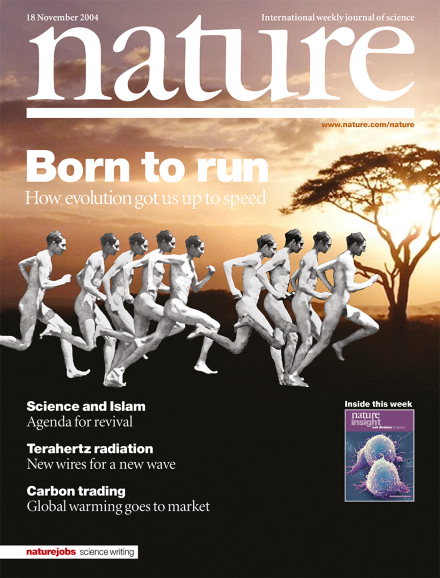Volume 432 Issue 7015, 18 November 2004
Brief Communications Arising
Editorial
News
News in Brief
Correction
News Feature
Correspondence
Commentary
Books & Arts
Essay
News & Views
Research Highlights
Brief Communication
Corrigendum
Introduction
Review Article
-
Intrinsic tumour suppression
Milestone:

